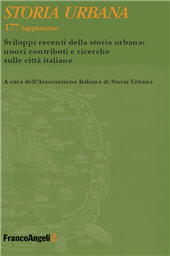La Milano alta di ieri, oggi e domani : nuovo paradigma urbano?
136-157 p.
di promuovere un senso di appartenenza e identità, o se rispondano piuttosto unicamente a logiche speculative e fondiarie, dove i grattacieli diventano le nuove cattedrali con funzione attrattiva, innescando così inevitabili processi di gentrificazione nelle aree in cui vengono eretti. [Testo dell'editore]
Not a day passes without the announcement, either in newspapers or, more frequently, on the web, of the arrival of a new and spectacular high-rise in the metropolitan area of Milan. From the already established projects of Porta Nuova and CityLife, to more recent developments such as Scalo Farini, Porta Romana, and San Siro, skyscrapers are quickly rising with the ambition to redesign degraded areas, giving them a new identity as symbols of modernity and innovation. However, the idea behind these operations is far from new: as early as the 1930s, and later with the Business Centre project, Milan witnessed the construction of skyscrapers and towers intended to regenerate destroyed or run-down zones, turning them into new hubs of attraction, also through the "visual dominance" over the horizontal cityscape. Today, the central question is whether these tall buildings truly have the capacity to actively contribute to urban regeneration, fostering the creation of public and collective spaces capable of generating
a sense of belonging and identity, or whether they primarily respond to speculative and land-based logics, where skyscrapers become the new cathedrals with an attractive function, thus triggering inevitable processes of gentrification in the areas where they are erected.[Publisher's text]
Forma parte de
Storia urbana : rivista di studi sulle trasformazioni della città e del territorio in età moderna : 177 Supplemento, 1, 2024-
Artículos del mismo número (disponibles individualmente)
-
Información
Código DOI: 10.3280/SU2024-Aisu20138
ISSN: 1972-5523


